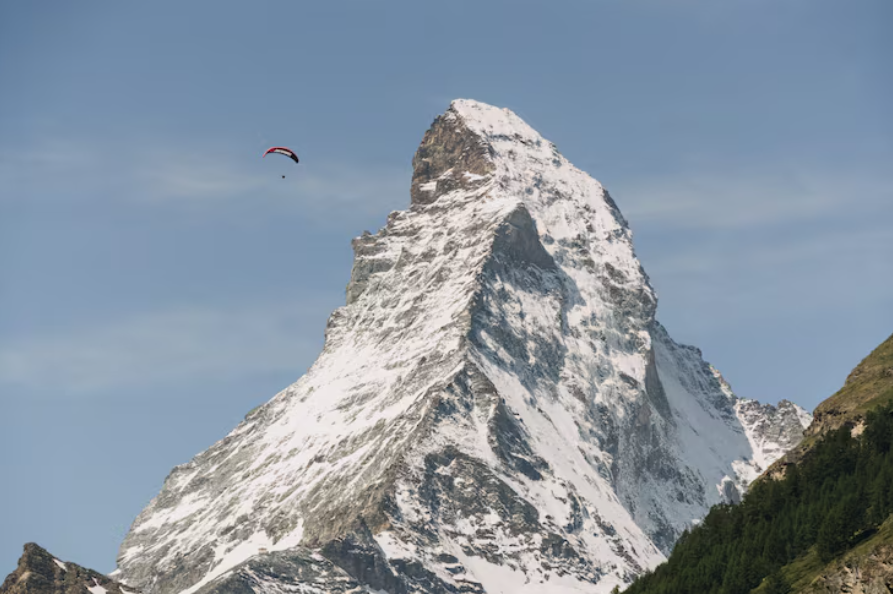Blog
Mount Fishtail: Sacred Himalayan Majesty and Its Untouched Legacy

Mount Fishtail, also known as Machapuchare (Machhapuchhre), stands as one of Nepal’s most iconic and revered peaks. Towering at approximately 6,993 meters (22,943 feet) in the Annapurna Himalayas, this mountain is not just a stunning geological feature but a deeply spiritual symbol. Its name—Machapuchare—derives from Nepali words “machha” (fish) and “puchhare” (tail), referencing its distinctive fishtail-shaped double summit. Unlike many other Himalayan peaks, Mount Fishtail has never been summited, maintaining a mystical and untrodden aura due to its religious significance to the local Gurung people and reverence for Lord Shiva.
Location and Geographical Features
Mount Fishtail lies in the Annapurna massif, just 25 km north of Pokhara in central Nepal. Geographically, it is part of the Gandaki Province and forms the southeastern backbone of the Annapurna Himal range. The mountain stands at the convergence of two major river valleys: the Seti Gandaki and Modi Khola, offering some of the most breathtaking views in the world. Its steep ridges and knife-edged faces dominate the skyline when viewed from Pokhara and form the southern gateway to the Annapurna Sanctuary, a natural amphitheater surrounded by some of the world’s highest peaks.
Cultural and Religious Significance
What sets Mount Fishtail apart from many other Himalayan giants is its spiritual importance. The mountain is considered sacred by local communities, especially the Gurungs, and is believed to be the home of Lord Shiva, the Hindu god of destruction and transformation. Because of this, the Nepalese government has prohibited any climbing beyond a certain elevation since the 1950s.
This reverence has contributed to the mountain’s pristine condition. Unlike Everest or Annapurna, which have suffered from overcrowding and environmental degradation, Fishtail remains untouched and protected, a rare feat in a time when adventure tourism thrives.
History of Exploration
The history of Mount Fishtail’s exploration is unique. The British expedition led by Wilfrid Noyce and A. D. M. Cox in 1957 came very close to summiting it. However, respecting the wishes of the Nepali government and locals, they turned back just 150 meters below the summit. Since then, no other expeditions have attempted the peak out of respect for its sanctity.
The mountain’s inaccessibility has only added to its legend, transforming it into a symbol of humility and respect for nature and local culture.
Mount Fishtail in Nepalese Tourism
Despite the restriction on climbing, Mount Fishtail is a centerpiece of Nepal’s tourism industry. It attracts thousands of trekkers and photographers each year who seek to witness its magnificence from nearby vantage points. The Annapurna Base Camp (ABC) trek, also known as the Annapurna Sanctuary Trek, is one of the most popular trails that offer spectacular views of Fishtail along with Annapurna I, Hiunchuli, and Gangapurna.
Pokhara, the gateway to the Annapurna region, offers clear vistas of Mount Fishtail from lakesides, hotels, and hilltops. Phewa Lake, in particular, offers a mirror-like reflection of the mountain on calm days, creating an iconic image that’s synonymous with the Nepal experience.
Environmental and Conservation Importance
Mount Fishtail’s unscaled status has had immense environmental benefits. Unlike other climbing hotspots where the ecosystems are suffering from human impact, this peak remains ecologically pristine. The surrounding Annapurna Conservation Area, Nepal’s largest protected area, benefits from tourism while maintaining sustainability through strict policies.
This region is home to diverse flora and fauna, including Himalayan Thar, snow leopards, red pandas, and rare birds. Trekking routes are carefully managed to minimize impact, and local communities are involved in eco-tourism initiatives. Fishtail’s unspoiled beauty acts as a model for conservation and responsible tourism in the Himalayas.
Trekking Routes and Vantage Points
While the summit is off-limits, several trekking trails offer up-close views of Mount Fishtail:
- Annapurna Base Camp (ABC) Trek: One of the most famous treks in Nepal, it offers panoramic views of Fishtail from Machapuchare Base Camp (MBC).
- Poon Hill Trek: Known for sunrise views, this trek provides distant but stunning vistas of the entire Annapurna range, including Fishtail.
- Australian Camp and Dhampus Village: Ideal for short treks, these areas offer photogenic views of the mountain.
- Sarangkot and World Peace Pagoda: Located near Pokhara, these are great spots for travelers not embarking on long treks.
Each route is designed to cater to various fitness levels and durations, making Mount Fishtail’s presence accessible to everyone.
Local Life and Mount Fishtail
The mountain is woven into the cultural and daily lives of locals. Many communities in the area have oral stories, legends, and rituals centered around Fishtail. Its presence is not just scenic but spiritual and cultural, influencing art, songs, and folklore.
Local tourism relies heavily on responsible trekking. Teahouses and lodges in villages like Ghandruk, Chhomrong, and Landruk are run by local families, ensuring that tourism revenues circulate within the community.
Climate and Best Time to Visit
Mount Fishtail can be viewed year-round, but the best seasons are:
- Spring (March to May): The weather is stable, skies are clearer, and rhododendrons are in full bloom.
- Autumn (September to November): Post-monsoon clarity makes it ideal for photography and trekking.
Winter (December to February) can be cold with snow, making higher elevations challenging. Monsoon (June to August) brings clouds and leeches on trails but is a time of lush greenery and fewer tourists.
Mount Fishtail in Photography and Media
Fishtail has become one of the most photographed mountains in Nepal. Its symmetrical shape and the contrast it provides with the surrounding rugged peaks make it a favorite among landscape photographers. It is frequently featured in documentaries, postcards, books, and social media content related to the Himalayas.
Professional and amateur photographers often gather at Phewa Lake or the Mardi Himal trail to capture its stunning silhouette during sunrise and sunset. The reflection of the mountain in the lake, especially during calm mornings, has become an iconic image of Nepal’s natural heritage.
Symbolism in Art and Literature
Fishtail symbolizes the duality of power and restraint. While it possesses all the grandeur and dominance of a Himalayan peak, its untouched summit reflects humility and respect. In literature and Nepalese art, Machapuchare often appears as a divine entity rather than a physical conquest.
Several writers and poets have used Fishtail as a metaphor for spiritual journeys, unattainable desires, or inner peace, highlighting its emotional and symbolic impact on both locals and visitors.
Challenges and Controversies
Although there is widespread support for keeping Mount Fishtail off-limits, some climbers have raised the question of why a peak should remain unconquered when mountaineering is about exploration and achievement. However, these voices are often outweighed by locals, spiritual leaders, and environmentalists who argue that some mountains should remain sacred and untouched.
There have also been occasional illegal climbing attempts, but the Nepali government maintains strict oversight, with punishments for violating sacred site restrictions.
Future of Mount Fishtail

As climate change continues to affect the Himalayas, including glacial melt and unpredictable weather patterns, preserving mountains like Fishtail becomes more urgent. Its status as an unclimbed and sacred mountain sets a precedent in environmental ethics and spiritual respect.
The future of Fishtail lies in balancing tourism with tradition, ensuring that the mountain remains not just a visual wonder, but also a living cultural heritage. It serves as a benchmark for how humanity can admire and respect nature without exploiting it.
Final Thoughts
Mount Fishtail is more than just a peak—it is a symbol of reverence, restraint, and natural beauty. Its untouched summit tells a story of respect for spirituality, culture, and ecology. In a world where most summits have been conquered and many natural wonders overrun, Fishtail stands alone as a testament to the belief that some places are not meant to be conquered, only cherished.
-

 Tech12 months ago
Tech12 months agoHow to Use a Temporary Number for WhatsApp
-

 Business2 years ago
Business2 years agoSepatuindonesia.com | Best Online Store in Indonesia
-

 Social Media1 year ago
Social Media1 year agoThe Best Methods to Download TikTok Videos Using SnapTik
-

 Technology1 year ago
Technology1 year agoTop High Paying Affiliate Programs
-

 Tech7 months ago
Tech7 months agoUnderstanding thejavasea.me Leaks Aio-TLP: A Comprehensive Guide
-

 Instagram3 years ago
Instagram3 years agoFree Instagram Auto Follower Without Login
-

 Instagram3 years ago
Instagram3 years agoFree Instagram Follower Without Login
-

 Technology11 months ago
Technology11 months agoLeverage Background Removal Tools to Create Eye-catching Videos


















